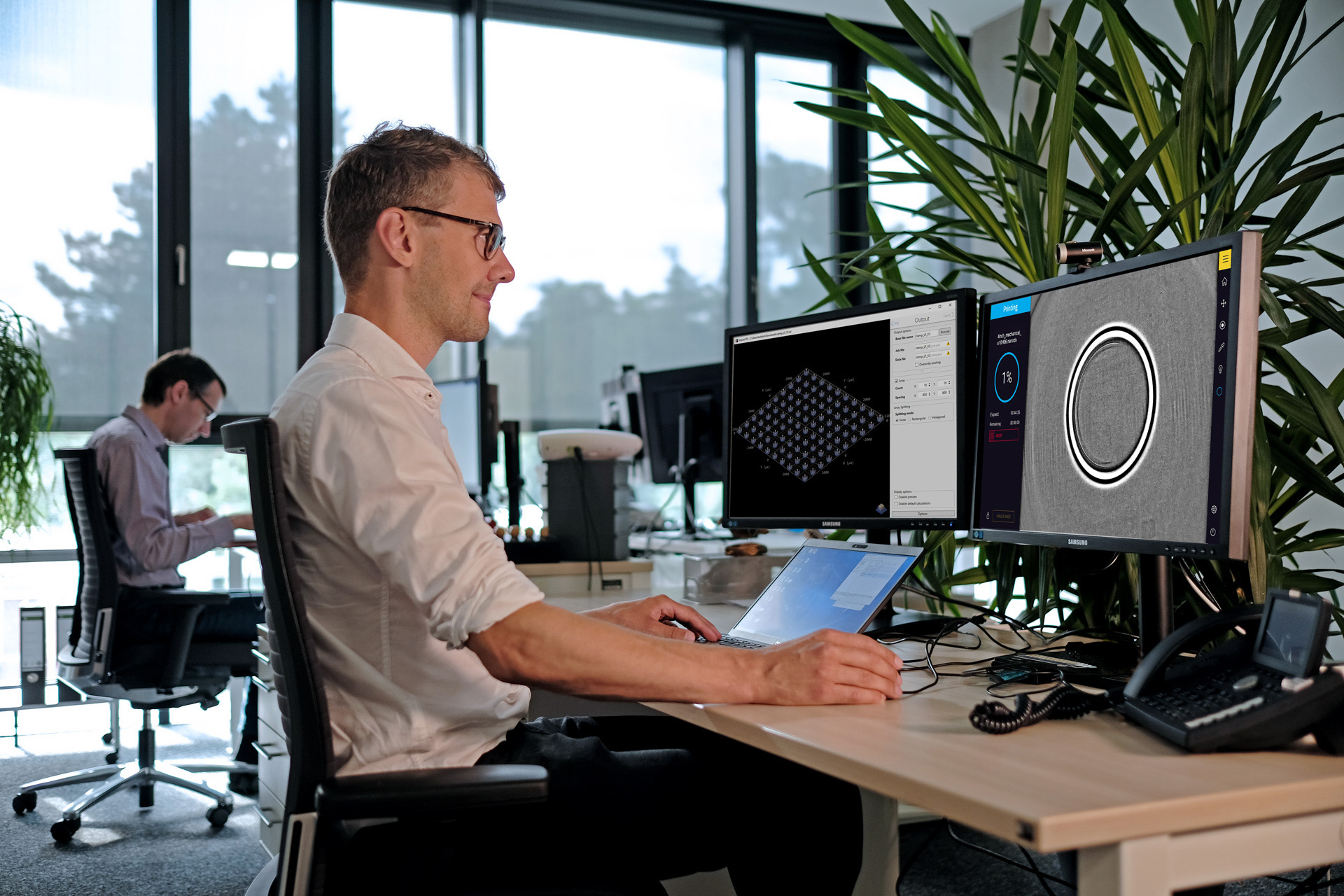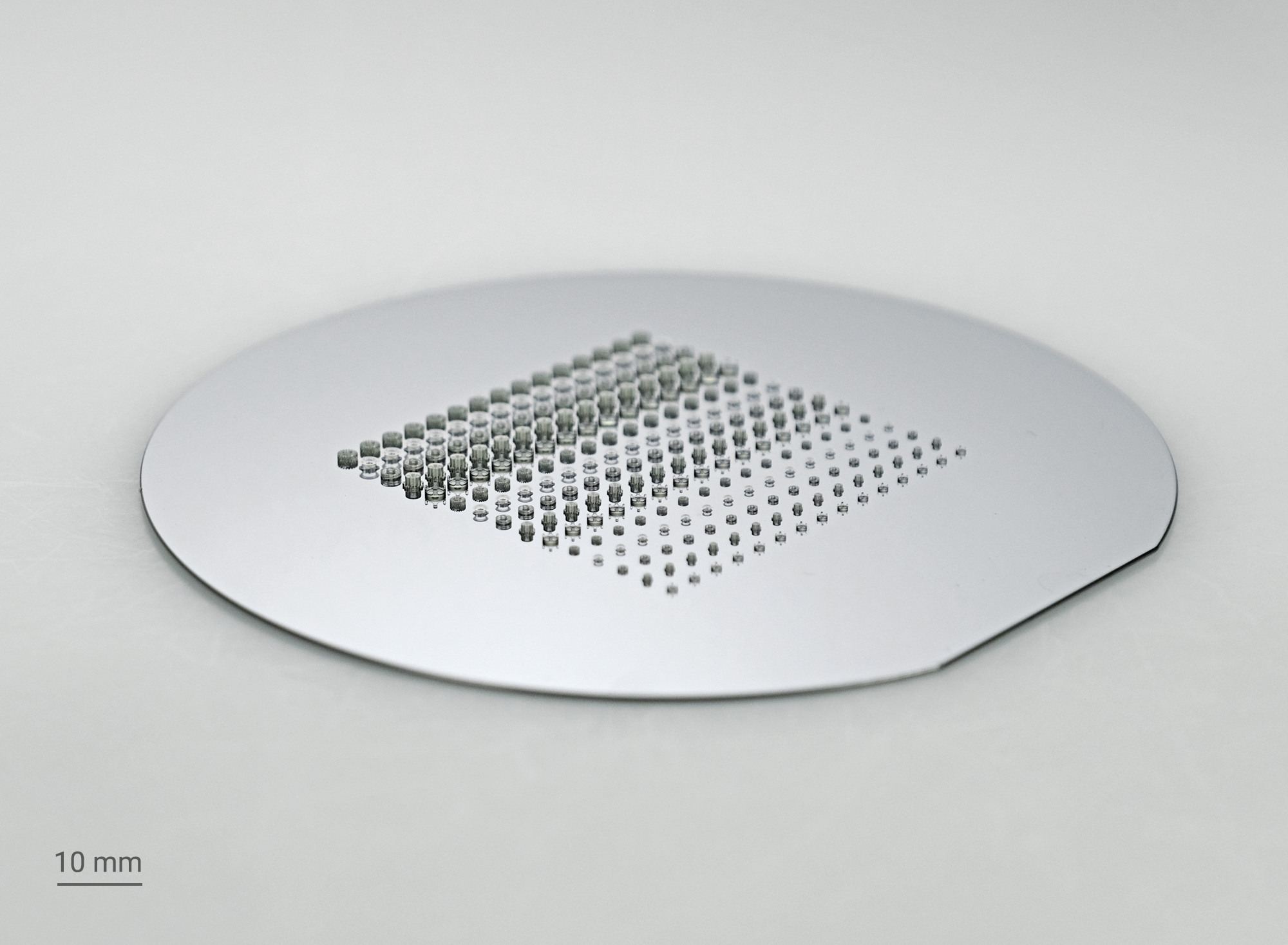German company Nanoscribe, a leading developer of high-precision additive manufacturing technologies and part of the BICO group (formerly known as Cellink), launched a new high-precision 3D printer for manufacturing elaborate structures in the micro and nano-scale. The new Quantum X shape joins the company’s award-winning Quantum X product line, with wafer handling capabilities that make “batch processing and small series production of 3D microparts easy,” according to the company. It is expected to significantly improve precision, output, and usability for applications in life sciences, material engineering, microfluidics, micro-optics, micromechanics, and microelectromechanical systems (MEMS).
Based on Two-Photon Polymerization (2PP), an additive manufacturing approach providing the highest precision and complete design freedom and Nanoscribe’s proprietary Two-Photon Grayscale Lithography (2GL) technology, the direct laser writing system is considered by Nanoscribe as optimal for the microfabrication of virtually any 2.5D or 3D shaped structure with submicrometer precision on areas up to 25 cm².
Co-founder and Chief Security Officer (CSO) of Nanoscribe, Michael Thiel, suggested the company is setting new standards in wafer-scale high-precision microfabrication for scientific and industrial purposes with its new machine.
“While the Quantum X is already driving the ultra-fast fabrication of flat micro-optics through Two-Photon Grayscale Lithography, we expect the Quantum X shape to make high-precision 3D printing based on Two-Photon Polymerization an unrivaled efficient and reliable tool for rapid prototyping and batch production in research labs and industry.”
Ideal for academic needs, 2PP is considered one of the most precise 3D printing processes for creating complex structures and has received tremendous interest in cell and tissue engineering and medical microdevices due to its capability to fabricate precisely design 3D micro- and nano-scale structures for biomedical applications. In recent years, several research labs have developed their own 2PP technology to create complex structures for advanced applications, making this on-demand segment a potentially profitable market for companies like Nanoscribe.
Nanoscribe’s Quantum X shape competes with a few other printers that leverage 2PP technology, like UpNano’s NanoOne high-resolution micro additive manufacturing (µAM) solution; the LithoProf3D, an advanced micro-laser lithography 3D printer made by another German company, Multiphoton Optics, and Microlight3D’s 2PP-based turnkey 3D printer Altraspin. As one of the newest choices in the market, the Quantum X shape promises a “state-of-the-art microfabrication process” that enables high-precision additive manufacturing, where accuracy and speed can be optimally balanced to achieve the highest level of productivity and quality.
Considered by Nanoscribe to be capable of producing “unmatched output,” the printer relies on a Galvanometer (Galvo) system – which is based on moving mirror technology – and smart electronics system control units on a sturdy granite-based platform combined with an industry-grade pulsed femtosecond laser. The Quantum X shape can print 3D microparts with Nanoscribe’s proprietary polymer and silica materials and is open to third-party or custom materials. Additionally, it can be controlled via the device’s integrated touchscreen and the remote access software nanoConnectX, which allows for the control of print jobs of connected printers remotely, reducing preparation time in the lab to a minimum, and simplifies group collaboration when sharing a system.

Nanoscribe’s Quantum X shape uses the company’s nanoConnectX software. Image courtesy of Nanoscribe/Bico.
The range of scales possible with the device goes from nanoscale printing, which features size control in all spatial directions down to 100 nanometers, to microscale, with typical dimensions from 50 to 700 micrometers, and mesoscale printing, with dimensions up to 50 millimeters. Moreover, the new Quantum X shape comes with a unique automatic interface finder that can detect substrate surfaces with a precision down to 30 nanometers. Nanoscribe said this “unmatched nanoscale accuracy at highest scan speed, coupled with self-calibration routines, results in reliable and accurate prints within the shortest time.” In contrast to other 2PP systems, Quantum X shape prints in an upright position. As a result, up to 200 typical structures can be printed overnight on a fully addressable print field of 50 x 50 mm².
CEO and Co-Founder of BICO, Erik Gatenholm, said the Quantum X shape’s innovative potential relies on “mind blowing technology” that will revolutionize microfabrication, especially for demanding life science applications, which encompasses BICO’s core customer base. In the last two years, BICO has been racing to revolutionize the field of bioconvergence. Nanoscribe’s acquisition in May 2021 was only one of 11 others, leading to one of the largest product portfolios in the bioprinting sector and reflecting a strategic business plan by Gatenholm that could revolutionize the segment within healthcare and research in life sciences.
Subscribe to Our Email Newsletter
Stay up-to-date on all the latest news from the 3D printing industry and receive information and offers from third party vendors.
Print Services
Upload your 3D Models and get them printed quickly and efficiently.
You May Also Like
Metal Powder Supplier Elementum 3D Added to $46B Air Force Contract
Elementum 3D, a Colorado-based developer and supplier of metal powders used in additive manufacturing (AM), announced that the company has been added to the vendors list in the fourth on-ramp...
Ursa Major Lands $28.6M AFRL Deal for 3D Printed Draper Engine Flight Demo
The US Air Force Research Laboratory’s (AFRL’s) Rocket Propulsion Division at Edwards Air Force Base has awarded a $28.6 million contract to Ursa Major for follow-on work related to the...
3D Printing Financials: Rocket Lab’s Record-Breaking Year and Over 20 Launches Coming in 2025
Rocket Lab (Nasdaq: RKLB) closed 2024 with its best year yet. The company launched more rockets, signed more contracts, and expanded deeper into spacecraft and satellite production than ever before....
US Air Force Taps Beehive to Study 3D Printed Jet Engines
Propulsion 3D printing firm Beehive Industries secured a contract from the U.S. Air Force Life Cycle Management Center through SOSSEC. SOSSEC is a company that manages Other Transactions Authority (OTA)...



































